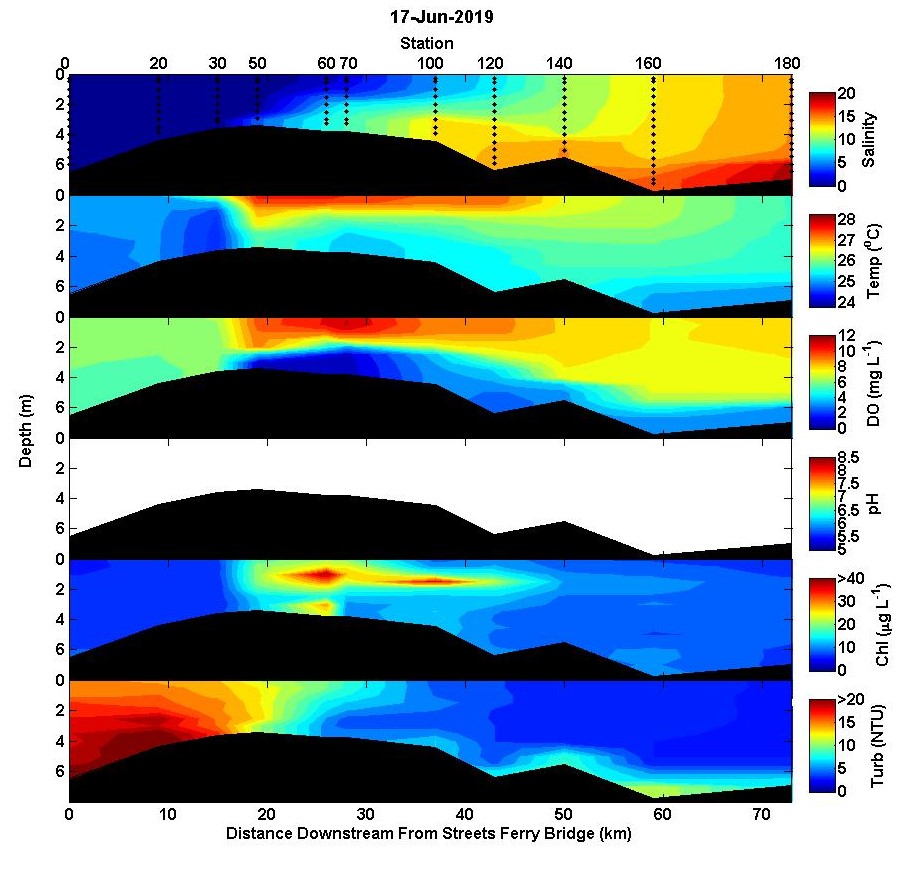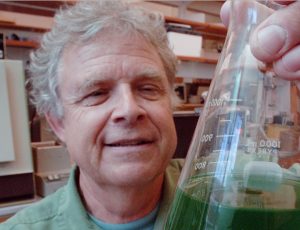Hi all,
Salinity in the lower estuary is average for this time of year but the upstream section is a little fresher than normal. The basin saw quite a bit of rain in the second week of June and river flows are about four times higher than the seasonal average. The salt wedge penetrated upstream to station 50 just downstream of the HWY 17 bridge. Bottom water dissolved oxygen was low from the tip of the salt wedge through the length of the estuary but was only below 2 mg/L (acutely lethal to fish) at stations 50-70. A subsurface peak in chlorophyll a at about 1 meter depth occurred from stations 60 -100. Microscopic examination of the surface water sample from station 60S revealed high concentrations of the dinoflagellate, Gyrodinium instriatum. This dinoflagellate is a common bloom former during the warmer months in the Neuse and is not known to produce toxins or negative food web related impacts. Photosynthesis produced a zone of supersaturated dissolved oxygen at the stations with high chlorophyll. pH data are not shown due to probe failure.
Best, Nathan


Leave a Reply